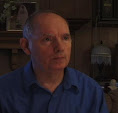On the blog post "Ghost Lights Versus Science?" it says, "It may seem like science is pitted against the mystery of those Marfa Lights of southwest Texas, but in truth scientific investigations are making progress in unraveling the mystery, notwithstanding one hypothesis that makes the result appear to be science fiction." It then tells us about the research and searches of James Bunnell, a scientist who has been unable, after years of work, to explain what is happening with those mysterious lights in southwest Texas.
Other scientists have tried to tackle the mystery, with no success, notwithstanding their many conjectures about things like earth lights and geologic features that have some kind of energy release. Some of those lights fly around together in ways so strange and complex that local ranchers and others refer to them as "dancing devils" or "ghost lights." They behave in ways suggesting some general intelligent cause or individual purpose for each light in a group.
Evelyn Cheesman, a British biologist who is now known as the first woman to be a curator at the Regent's Park Zoo in London, witnessed strange lights during one of her expeditions in the southwest Pacific. She wrote about them in her 1935 book The Two Roads of Papua. But in her lifetime she never realized the potential significance of those lights to biology. In the early twenty-first century, a few cryptozoologists began suggesting the "Cheesman Lights" were made by flying creatures related to the ropen of Papua New Guinea.
Now the Marfa Lights are being evaluated for their potential as flying predators, and bioluminescent ones at that, similar to the ropen lights. All of them, including the Cheesman Lights, are probably bioluminescent flying predators, and eyewitness sightings in daylight indicate at least some of them are large living pterosaurs, called by some Americans "pterodactyls."
Thursday, January 13, 2011
Subscribe to:
Post Comments (Atom)

No comments:
Post a Comment